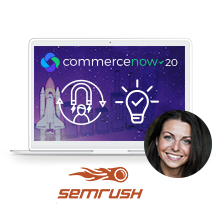It should go without saying that the first step toward having success with a SaaS business is offering high-quality products and services that add real value to your customers’ lives.
But even with great products that sell themselves, you still need effective marketing and customer relationship management to take you to step two and beyond.
Why? Well, If your prospects aren’t clear about how your product would benefit them, they may decide to go with your competitor. Or if your current customers don’t feel you value their business, they may decide not to renew. In the competitive SaaS environment, it’s crucial to use all the tools at your disposal to both gain and retain a robust clientele that is engaged with your brand and confident in the value you’re offering them.
Most experts agree that it can cost many times more to acquire a new customer than it does to retain an existing one, and a Bain & Company study indicated that increasing customer retention by 5 percent increases profits by 25 to 95 percent. This means that it’s vital that you focus efforts on customer retention as well as initial conversion, as acquisition and retention are two sides of the same coin. Both require a commitment to creating a positive experience that keeps customers and prospects engaged with your company and product.
A CEI survey found that 86 percent of buyers are willing to pay more for a better customer experience, and according to an Accenture survey, in 2013, 62 percent of customers switched service providers due to a poor service experience. Companies that excel in customer-centric practices, on the other hand, report continuous growth in revenue, customer acquisition, and customer retention.
Here are three strategies you should be focusing on that can improve customer experience to increase both acquisition and retention.
1. Build intimacy and engagement with leads and existing customers
The relationships fostered via social media and other channels during the acquisition stage are deeply impactful to customer conversion. An NM Incite study demonstrates the importance of “social care” of customers via social media. According to the study, 71 percent of customers who experience “great social care” are likely to recommend the product or service to a friend, compared with 17% of customers who have a negative social experience. Marketing in the social media age can’t be a one-way street.
Today’s marketing means creating dialogue and one-on-one interactions with prospects and existing customers via social media platforms and other methods like email and webinars as buyers respond to being part of the conversation. Importantly, extend that conversation from new leads to existing customers by asking for feedback regularly. Develop a holistic strategy that keeps customers engaged from first contact through their entire lifecycle.
Bonus: Learn how to create relevant content for each stage in the buyer journey to create engagement with your leads and customers.
2. Take full advantage of customer analytics
As a marketer, you have extensive access to data on your marketing strategy’s impact on customer acquisition, retention, and behavior. It is astonishing how many marketers still aren’t taking full advantage of these tools to formally track what works and what does not. Additionally, analytics can reveal who’s using your product and how they’re using it — and more importantly, how they’re not using it. What value is in your product that your current customers aren’t accessing? What can you do to make that value clearer to both leads and customers?
When you start with a strategy to keep your customers engaged throughout their lifecycle, collecting this information and integrating it into your targeted marketing becomes possible and can help you fine-tune your approach and make sure you’re accurately addressing customers’ needs and preferences.
3. Use segmentation and targeting to speak your customers’ language
Naturally, different segments of your lead and customer population have different needs, desires, and pain points. Once you know who is buying your product and how they’re using it, you can tailor the style, language, and presentation of your online content to different audiences. Language, style, and persona speak volumes and can instantly alienate or attract individual buyers. Know what your target clientele like, what they find relatable, and what they want from your product to tailor your message specifically to the right leads.
Ultimately, both customer acquisition and retention come down to cultivating relationships with leads and customers. When you make a conscious effort to get to know your customers and their needs, they’re more confident in buying from you — and you’re better equipped to retain their business for a long time to come.
Need more tips for customer retention? Check out this webinar with SEMrush taking up a novel perspective on it: gamification.






